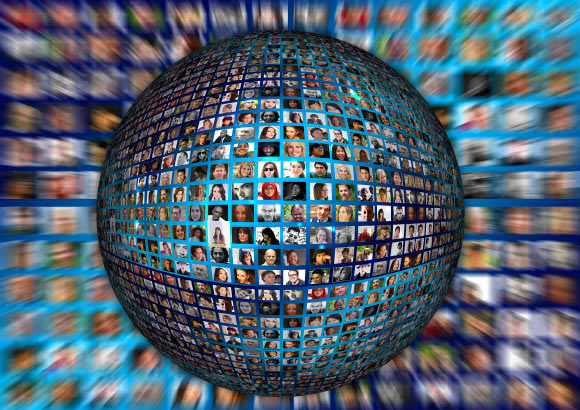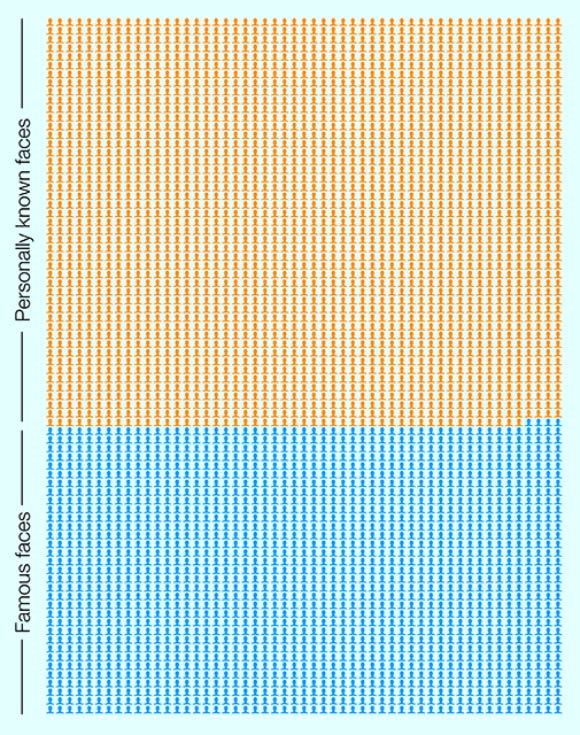Over our species history, humans have typically lived in small groups of under a hundred individuals. But a new study, published in the journal Royal Society Proceedings B, suggests our facial recognition abilities equip us to deal with the thousands of faces.

By combining separate measures of recall and recognition, Jenkins et al show that people know about 5,000 faces on average and that individual differences are large. Image credit: Gerd Altmann.
“Our study focused on the number of faces people actually know — we haven’t yet found a limit on how many faces the brain can handle,” said lead author Dr. Rob Jenkins, a researcher in the Department of Psychology at the University of York, UK.
“The ability to distinguish different individuals is clearly important — it allows you to keep track of people’s behavior over time, and to modify your own behavior accordingly.”
For the study, participants spent an hour writing down as many faces from their personal lives as possible — including people they went to school with, colleagues and family.
They then did the same for famous faces, such as actors, politicians, and other public figures.
The participants found it easy to come up with lots of faces at first, but harder to think of new ones by the end of the hour.
That change of pace allowed Dr. Jenkins and co-authors to estimate when they would run out of faces completely.
The participants were also shown thousands of photographs of famous people and asked which ones they recognized.
The researchers required participants to recognize two different photos of each person to ensure consistency.

Jenkins et al tested the participants on how many faces they could recall from their personal lives and the media, as well as the number of famous faces they recognized. Image credit: Rob Jenkins, University of York.
The results showed that the participants knew between 1,000 and 10,000 faces.
“The range could be explained by some people having a natural aptitude for remembering faces,” Dr. Jenkins said.
“There are differences in how much attention people pay to faces, and how efficiently they process the information.”
“Alternatively, it could reflect different social environments – some participants may have grown up in more densely populated places with more social input.”
_____
R. Jenkins et al. 2018. How many faces do people know? Proc. R. Soc. B 285 (1888); doi: 10.1098/rspb.2018.1319







